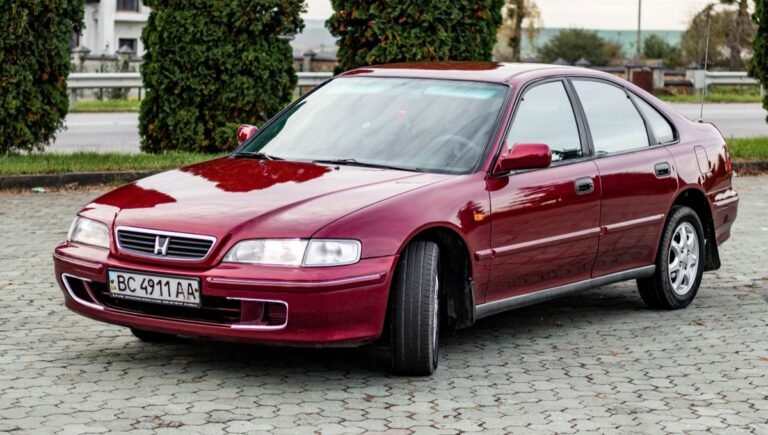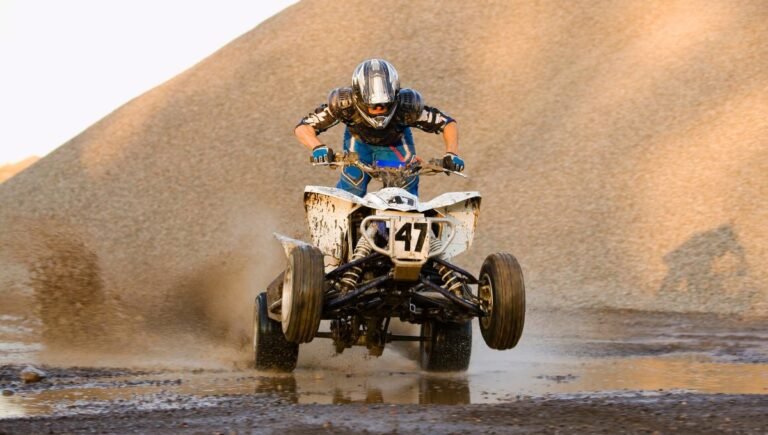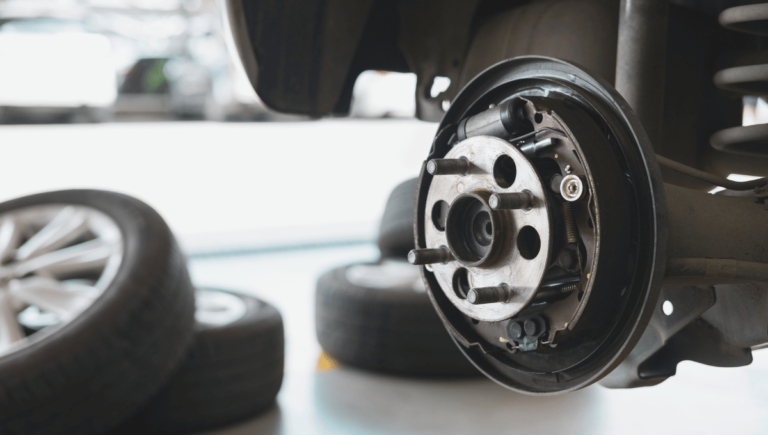Can You Jump Start A Four Wheeler With A Truck? Quick Guide
Yes, you can jump start a four-wheeler with a truck. It is a common practice for emergency situations.
Jump starting a four-wheeler with a truck involves connecting the batteries with jumper cables. This method can provide the necessary boost to start the four-wheeler’s engine. However, it is essential to follow the correct steps and safety precautions to avoid any damage to the vehicles or injury to yourself.
In this blog post, we will discuss the step-by-step process of jump starting a four-wheeler with a truck, highlighting the precautions to take and the potential risks involved. By the end of this guide, you will have a clear understanding of how to safely jump start a four-wheeler using a truck and be prepared for such situations.
Introduction To Jump Start A Four Wheeler
Jump starting a four wheeler with a truck is possible, but caution is key. Ensure both vehicles are off before connecting the jumper cables correctly. Follow the proper steps to safely jump start your four wheeler using a truck.

The Need For Jump Starting Off-road Vehicles
Jump starting a four-wheeler with a truck is a crucial skill for off-road enthusiasts. When your four-wheeler’s battery is dead in the middle of nowhere, a jump start can be a lifesaver. Knowing how to perform this task can save you from being stranded and get you back on the trail in no time. But, it’s important to understand the process and safety considerations before attempting a jump start.
Safety Considerations Before Attempting A Jump Start
Before attempting to jump start a four-wheeler with a truck, there are several safety considerations to keep in mind. Safety should always be the top priority when dealing with electrical systems and heavy machinery. Taking the necessary precautions can help prevent accidents and injuries. It’s essential to understand the potential risks and how to mitigate them before proceeding with a jump start.
Essential Tools And Equipment
When it comes to jump-starting a four-wheeler with a truck, having the right tools and equipment is crucial for a safe and successful process. In this section, we’ll delve into the essential tools and equipment you’ll need, focusing on choosing the right jumper cables and additional safety gear.
Choosing The Right Jumper Cables
Jumper cables are the lifeline of jump-starting a four-wheeler with a truck. Opt for heavy-duty cables with a gauge of at least 6 and a length of 12 feet to ensure they can reach between the vehicles easily.
Additional Safety Gear For The Process
Safety gear is vital to prevent accidents and ensure a smooth jump-starting process. Always have safety glasses, gloves, and a fire extinguisher on hand. These items can protect you from sparks and potential mishaps.
Preparing For The Jump Start
To jump start a four-wheeler with a truck, ensure both vehicles are off, connect the jumper cables, start the truck, then the four-wheeler, and disconnect carefully. Remember to follow safety precautions and refer to the owner’s manual for specific instructions.

Jump starting a four wheeler with a truck is a quick and easy way to get your vehicle up and running again. However, before you attempt to jump start your four wheeler, it is important to take some time to prepare. This includes inspecting the battery of the four wheeler and positioning the truck appropriately.
Inspecting The Battery Of The Four Wheeler
Before attempting to jump start your four wheeler, it is important to inspect the battery to ensure it is safe to use. Look for any signs of damage such as cracks or leaks. Also, check the terminals for corrosion or other signs of wear. If the battery appears to be damaged in any way, do not attempt to jump start the four wheeler. Instead, have it inspected by a professional.
Positioning The Truck Appropriately
To jump start a four wheeler with a truck, you must position the vehicles properly. First, park the truck next to the four wheeler, ensuring that the two vehicles are close enough for the jumper cables to reach. Turn off the truck and engage the emergency brake. Then, turn off all electrical components in both vehicles, including the headlights, radio, and air conditioning.
Once the vehicles are properly positioned, it is time to connect the jumper cables. Make sure that the red cable is connected to the positive (+) terminal of the four wheeler’s battery and the other end to the positive (+) terminal of the truck’s battery. Then, connect the black cable to the negative (-) terminal of the truck’s battery and the other end to a clean, unpainted metal surface on the four wheeler’s engine block.
Before attempting to start the four wheeler, allow the vehicles to sit for a few minutes to allow the battery to charge. Then, start the truck and allow it to run for a few minutes before attempting to start the four wheeler. If the four wheeler does not start, repeat the process or seek professional assistance.
In conclusion, by following these simple steps, you can safely and effectively jump start your four wheeler using a truck. Remember to always take the time to inspect the battery and position the vehicles properly before attempting to jump start the four wheeler.
Step-by-step Jump Start Procedure
When your four wheeler’s battery is dead and you need to get it up and running quickly, jump starting it with a truck can be a viable solution. However, it’s essential to follow a proper step-by-step procedure to ensure a successful jump start. In this guide, we will walk you through the process of jump starting a four wheeler with a truck, starting with connecting the jumper cables correctly.
Connecting The Jumper Cables Correctly
- Position both vehicles near each other, ensuring they don’t touch.
- Identify the positive and negative terminals on both the four wheeler and the truck’s battery.
- Take one end of the jumper cable and attach it to the positive terminal of the truck’s battery.
- Connect the other end of the same jumper cable to the positive terminal of the four wheeler’s battery.
- Next, take the second jumper cable and connect one end to the negative terminal of the truck’s battery.
- Finally, attach the other end of the second jumper cable to a metal, unpainted part of the four wheeler’s frame.
Initiating The Jump Start From The Truck
- Start the truck and let it run for a few minutes to allow the battery to charge.
- Once the truck is running, try starting the four wheeler.
- If the four wheeler doesn’t start, check the connections and ensure they are secure.
- If necessary, reposition the jumper cables and try again.
Following this step-by-step jump start procedure will help you safely and effectively jump start your four wheeler using a truck. Remember to exercise caution and double-check all connections to avoid any potential accidents or damage to the vehicles. Always consult your vehicle’s manual for specific instructions and safety precautions.
Troubleshooting Common Issues
When it comes to four wheelers, sometimes you may encounter issues with starting the engine. This can be frustrating, especially if you are planning an outdoor adventure or need to use the vehicle for work. However, before you panic and start thinking about expensive repairs, there are a few common issues that you can troubleshoot on your own. In this section, we will discuss what to do if the four wheeler doesn’t start and how to handle a dead battery situation.

What To Do If The Four Wheeler Doesn’t Start
If your four wheeler refuses to start, don’t worry. There are a few steps you can take to diagnose and potentially resolve the issue. Here’s what you can do:
- Check the fuel: Ensure that there is enough fuel in the tank. Sometimes, the simplest explanation is the correct one, and running out of fuel can prevent your four wheeler from starting.
- Inspect the spark plug: A faulty or dirty spark plug can cause starting problems. Remove the spark plug and check for any signs of damage or buildup. If necessary, clean or replace the spark plug.
- Verify the air filter: A clogged or dirty air filter can restrict airflow and affect the engine’s performance. Remove the air filter and inspect it for dirt or debris. If it appears dirty, clean or replace it.
- Examine the battery connections: Loose or corroded battery connections can prevent the electrical system from functioning properly. Check the battery terminals and clean or tighten them if necessary.
- Test the starter motor: If all else fails, the issue may lie with the starter motor. You can try jump-starting the four wheeler with a truck or seek professional assistance to diagnose and repair the motor.
Handling A Dead Battery Situation
A dead battery is a common issue that can prevent your four wheeler from starting. Here’s what you can do to handle this situation:
- Check the battery voltage: Use a multimeter to measure the battery voltage. If it reads below the recommended level, the battery may need to be charged or replaced.
- Jump-start the four wheeler: If you have access to a truck or another vehicle, you can jump-start the four wheeler using jumper cables. Make sure to follow the proper safety precautions and connect the cables correctly.
- Charge the battery: If you have a battery charger, you can recharge the dead battery. Connect the charger according to the manufacturer’s instructions and let it charge for the recommended duration.
- Replace the battery: If the battery is old or damaged, it may need to be replaced. Consult the owner’s manual or seek professional advice to ensure you select the correct battery for your four wheeler.
By following these troubleshooting steps, you can often identify and resolve common issues that may prevent your four wheeler from starting. However, if the problem persists or you are uncertain about performing the necessary repairs, it’s always best to consult a professional mechanic to ensure the proper functioning of your vehicle.
Post Jump Start Checklist
After successfully jump-starting your four-wheeler using a truck, it’s essential to perform a post-jump start checklist to ensure everything is in proper working order. This checklist includes safely removing the cables and checking the four-wheeler’s charging system.

Removing The Cables Safely
When removing the cables after jump-starting your four-wheeler with a truck, follow these steps:
- Turn off the truck’s engine.
- Remove the black (negative) cable from the four-wheeler’s battery.
- Next, remove the black (negative) cable from the truck’s battery.
- Then, remove the red (positive) cable from the truck’s battery.
- Finally, remove the red (positive) cable from the four-wheeler’s battery.
Checking The Four Wheeler’s Charging System
After jump-starting your four-wheeler with a truck, it’s crucial to inspect the charging system to ensure it’s functioning properly. Follow these steps to check the four-wheeler’s charging system:
- Start the four-wheeler’s engine and let it run for a few minutes.
- Using a multimeter, check the voltage across the battery terminals. It should read between 13.5 to 14.5 volts, indicating that the charging system is working correctly.
- If the voltage reading is below or above the recommended range, it may indicate a problem with the charging system, and further inspection by a professional mechanic is advisable.
Maintenance Tips To Avoid Future Start-up Problems
Jump-starting a four-wheeler with a truck can be done, but it’s important to follow proper safety precautions. Connect the positive terminals first, then the negative terminals, and avoid touching any metal surfaces. Once connected, start the truck and then the four-wheeler.
Regular maintenance and battery checks can help prevent the need for jump-starting in the future.
Regular Battery Care And Charging
Keep the battery terminals clean and secure.
Inspect the battery for any signs of corrosion.
Charge the battery using a suitable charger.
Ensure the battery is fully charged before storage.
Routine Inspection And Vehicle Care
Check the oil levels regularly.
Inspect the spark plugs for wear and tear.
Keep the air filter clean and replace if necessary.
Monitor tire pressure and tread depth consistently.
Professional Help And When To Seek It
Seeking professional help is crucial when it comes to jump-starting a four-wheeler with a truck. It is important to understand the proper techniques and precautions to avoid causing damage to both vehicles. A professional can provide the necessary expertise and guidance in such situations.
Resources For Off-road Vehicle Maintenance
In the event of a more complex issue, a professional mechanic should be consulted. Signs that indicate a need for professional help include strange noises or engine malfunctions. Additionally, a professional should be sought if the problem persists despite jump-start attempts.
When it comes to off-road vehicle maintenance, having resources at your disposal is crucial. Some useful resources include online forums, manufacturer websites, and specialized repair shops. Regular maintenance can prevent the need for costly repairs down the line.
Conclusion
Jump starting a four wheeler with a truck is possible, but it requires some precautions. Make sure that the battery voltage and amperage ratings match between the two vehicles, and connect the cables properly. However, it is always better to be prepared with a portable jump starter or a spare battery.
Don’t forget to maintain your four wheeler’s battery to avoid the need for jump starting in the first place. Stay safe and enjoy your off-road adventures!

Wheelsstuds is your one-stop online destination for everything from the world of mobility – cars, motorcycles, scooters, aviation, railways, and metro.






